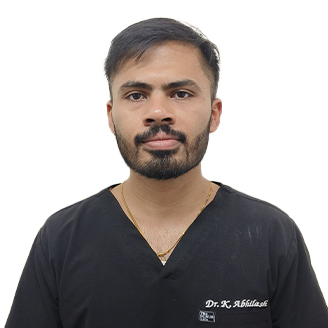-
Doctors
-
Specialities & Treatments
Centre of Excellence
Specialties
Treatments and Procedures
Hospitals & Directions HyderabadCARE Hospitals, Banjara Hills CARE Outpatient Centre, Banjara Hills CARE Hospitals, HITEC City CARE Hospitals, Nampally Gurunanak CARE Hospitals, Musheerabad CARE Hospitals Outpatient Centre, HITEC City CARE Hospitals, Malakpet
HyderabadCARE Hospitals, Banjara Hills CARE Outpatient Centre, Banjara Hills CARE Hospitals, HITEC City CARE Hospitals, Nampally Gurunanak CARE Hospitals, Musheerabad CARE Hospitals Outpatient Centre, HITEC City CARE Hospitals, Malakpet Raipur
Raipur
 Bhubaneswar
Bhubaneswar Visakhapatnam
Visakhapatnam
 Nagpur
Nagpur
 Indore
Indore
 Chh. Sambhajinagar
Chh. SambhajinagarClinics & Medical Centers
Book an AppointmentContact Us
Online Lab Reports
Book an Appointment
Consult Super-Specialist Doctors at CARE Hospitals

Peripheral Angioplasty
Peripheral Angioplasty
Peripheral Angioplasty in Hyderabad, India
Angioplasty is quite an invasive stent placement procedure that is used to open narrow or blocked arteries. This mainly requires a very small incision and depends on the location where the artery is affected. This is a medical procedure where the doctor uses a balloon that helps to widen the artery. A stent is inserted into the artery, which is a tiny mesh.
The doctor will prescribe the medicines to prevent the clotting and also lower the cholesterol level. At CARE Hospitals, all efforts will be done to take care in a very perfect way. Doctors will guide you so that your high blood pressure, cholesterol, and nutrition are managed systematically after the procedure.
Why is it done?
When the cholesterol levels become high, the fatty substance gets attached to the walls of the arteries. This fatty substance gets accumulated in the arteries and they become narrow. The space which is available for the flow of the blood gets reduced. Thus Angioplasty and stent placement are the treatment for narrowed arteries.
Symptoms of Peripheral Angioplasty
It is always better to be aware of the symptoms associated with the disease. Some of the main symptoms are;
-
Coldness in the legs.
-
There will be a change in the color of the legs.
-
You will experience numbness in the legs.
-
Cramping will be there after the activity.
-
You can also experience some kind of soreness in the toes.
Initially, doctors will try with the medications and in the case where the medications do not help then the next option the doctor will opt for is angioplasty and the stent placement.
Risks of Peripheral Angioplasty
Some of the risks involved in the procedure include;
-
Some of the medications can cause allergic reactions.
-
There might be breathing problems.
-
Some other problems like blood clots and bleeding can be there.
-
There are chances of kidney damage.
-
You can also get some kind of infection
-
The arteries can be narrowed again.
-
There are chances that the arteries can be ruptured.
It is always better to prepare well for the procedure to avoid any complications.
-
You should inform the doctor if you have any allergies.
-
Inform the doctor if you are taking any medications for any illness.
-
Don't eat or drink anything the night before the surgery.
Benefits of Peripheral Angioplasty
Peripheral angioplasty, a minimally invasive procedure used to treat peripheral artery disease (PAD), offers several benefits:
- Improved Blood Flow: The primary goal of peripheral angioplasty is to open narrowed or blocked arteries, restoring normal blood flow to the affected limbs. This can alleviate symptoms such as pain, cramping, and numbness associated with PAD.
- Symptom Relief: Peripheral angioplasty can provide effective relief from symptoms caused by reduced blood flow to the legs, such as intermittent claudication (pain during walking) and rest pain. Improved circulation enhances mobility and quality of life.
- Avoidance of Surgery: Unlike traditional open surgical procedures, peripheral angioplasty is a minimally invasive technique. It involves making small incisions, often at the groin, and threading a catheter through blood vessels to the site of the blockage. This reduces the need for extensive surgical incisions and decreases recovery time.
- Shorter Recovery Time: Patients undergoing peripheral angioplasty typically experience a shorter recovery period compared to traditional surgery. The procedure is usually performed on an outpatient basis or with a short hospital stay, allowing patients to resume their normal activities sooner.
- Reduced Complications: The minimally invasive nature of peripheral angioplasty generally results in fewer complications compared to open surgical procedures. There is a lower risk of infection, bleeding, and other surgical complications.
- Preservation of Vessel Function: Peripheral angioplasty aims to preserve the natural structure and function of blood vessels. The procedure can be repeated if necessary, and the use of stents helps to keep the treated arteries open, preventing future blockages.
- Enhanced Quality of Life: By improving blood flow and alleviating symptoms, peripheral angioplasty can significantly enhance a patient's overall quality of life. Increased mobility and reduced pain contribute to a more active and fulfilling lifestyle.
- Lower Healthcare Costs: Minimally invasive procedures like peripheral angioplasty are often associated with lower healthcare costs compared to traditional open surgeries. This can result in reduced hospitalization expenses and overall healthcare expenditures.
- Customized Treatment: Peripheral angioplasty allows for a targeted and customized approach to treating specific blockages or narrowing in blood vessels. The procedure can be tailored to the individual patient's anatomy and the severity of the arterial disease.
- Lower Risks for Certain Patients: Some patients may be at higher risk for complications with traditional open surgery. Peripheral angioplasty can be a preferable option for those with multiple comorbidities or other factors that increase the risks associated with surgery.
Procedure of Peripheral Angioplasty
Local anaesthesia will be given during the procedure. Most people will be awake but they will not be experiencing any pain. This is considered a less invasive procedure that is usually done with a small incision, which will help the doctor to access the blocked artery. The incision will be through the catheter and further guide the catheter towards the blockage of the arteries. The doctor will view the arteries through the x-rays and also use the dye so that the blockage can be located easily.
The next step is to place the stent. A small wire is passed through the catheter, which is followed by the other catheter attached to a small balloon. After reaching the blocked artery the balloon is inflated. This will further allow the artery to open and allow the blood flow. Then the stent is placed and expands along with the balloon. Once the surgeon ensures that the stent is in place he will remove the catheter.
The next is to close the incision. Once the stent placement is done the incision is closed and you will be sent to the recovery room and kept for observation. Blood pressure and heart rate will be monitored. Some are asked to stay overnight in the hospitals and some will be sent home the same day. At CARE Hospitals, we offer state-of-the-art infrastructure. Our team of doctors and staff ensures you recover easily and quickly.
Our Doctors
-

Dr. Simran Jain
MBBS,DNB (Paediatrics), MNAMS, DrNB (Paediatric Cardiology)
Cardiology, Paediatric Cardiology, Paediatrics
View More -

Dr. Attada Prudhvi Raj
MBBS, MD, DNB
Cardiology
View More -

Dr. Sagheer Ahmed Qureshi
MBBS, MD, DM
Cardiology
View More -

Dr. Arvind Singh Raghuwanshi
MBBS, MD-Medicine, DM-Cardiology
Cardiology
View More -

Dr. Sunil Kumar Sharma
MBBS, MD, DNB
Cardiology
View More -

Dr. Rajeev Khare
MBBS, MD (Medicine), DM (Cardiology)
Cardiology
View More -

Dr. Nitin Modi
MBBS, MD, DNB, DM
Cardiology
View More -

Dr. Girish Kawthekar
MBBS, MD, DCM (France), FACC, FESS, FSCAI
Cardiology
View More -

Dr. A. S. V. Narayana Rao
MBBS, MD (General Medicine), DM (Cardiology), FICC, FESC
Cardiology
View More -

Dr. Ajay Kumar Halwai
MBBS, MD
Cardiology
View More -

Dr. Alluri Raja Gopala Raju
MBBS, MD, DM, FICA
Cardiology
View More -

Dr. Alluri Srinivas Raju
MBBS, MD, DNB
Cardiology
View More -

Dr. Aman Salwan
MBBS, MD, DNB Cardiology, FICS (Singapore), FACC, FESE
Cardiology
View More -

Dr. Amey Beedkar
MBBS, MD (Medicine), DM (Cardiology)
Cardiology
View More -

Dr. Aminuddin Ahmeduddin Owaisi
MBBS, MD, DM
Cardiology
View More -

Dr. Anoop Agrawal
MBBS (AIIMS), MD, DM (ABIM, USA), FACC, FASE
Cardiology
View More -

Dr. Ashish Mishra
MBBS, MD, DNB (Cardiology), FACC
Cardiology
View More -

Dr. Ashutosh Kumar
MD (BHU), DM (PGI), FACC (USA), FHRS (USA), FESC (EURO), FSCAI (USA), PDCC (EP), CCDS (IBHRE, USA), CEPS (IBHRE, USA)
Cardiology
View More -

Dr. Atul Karande
MD, FASE, FIAE
Cardiology
View More -

Dr. Beeku Naik Ds
MBBS (JIPMER), MD, DNB (Cardiology), FSCAI
Cardiology
View More -

Dr. Bharat Agrawal
MBBS, DNB (MED), DNB (Cardiology)
Cardiology
View More -

Dr. Bikram Keshari Mohapatra
MBBS, MD (Medicine), DM (Cardiology)
Cardiology
View More -

Dr. Chanakya Kishore Kammaripalli
MBBS, MD, DM (Cardiology) (AIIMS), FACC, FSCAI
Cardiology
View More -

Dr. Debasish Mohapatra
MBBS, MD (General Medicine), DM (Cardiology)
Cardiology
View More -

Dr. G.S.R.MURTHY
MBBS, MD (General Medicine), DM (Cardiology)
Cardiology
View More -

Dr. Gandhamdara Kiran Kumar
MBBS, MD (Paediatrics), DM (Cardiology), FSCAI
Cardiology
View More -

Dr. Ganesh Sapkal
MBBS, DM (Cardiology)
Cardiology
View More -

Dr. Giridhari Jena
MBBS, MD, DM (Cardiology)
Cardiology
View More -

Dr. Gulla Surya Prakash
MBBS, MD (AIMS), DM, FSCAI, FACC (USA), FESC (EUR), MBA (Hospital Administration)
Cardiology
View More -

Dr. Indira Panda
MBBS, PGDCC, CCCS, CCEBDM
Cardiology
View More -

Dr. Javed Ali Khan
MBBS, MD, DM
Cardiology
View More -

Dr. Johann Christopher
MBBS, MD, DNB, FACC, FICS
Cardiology
View More -

Dr. K.V.S.S.R. Abhilash
MBBS, MD, (DNB)
Cardiology
View More -

Dr. Kanhu Charan Mishra
MBBS, MD, DM (Cardiology)
Cardiology
View More -

Dr. Lalith Agarwal
MBBS, DNB (Internal Medicine), DNB (Cardiology)
Cardiology
View More -

Dr. Lalitha Ravinuthala
MBBS,MD,DM
Cardiology
View More -

Dr. Lalukota Krishna Mohan
MBBS, MRCP (UK), FRCP (London)
Cardiology
View More -

Dr. M Srinivasa Rao
MD, DM (Cardiology), FACC (USA), FESC, FSCAI (USA)
Cardiology
View More -

Dr. M. Hanumantha Reddy
MBBS, DNB (General Medicine), DrNB (Cardiology), FAPSIC, FAPSC Cardiac Fellowship in National Heart Center, Singapore
Cardiology
View More -

Dr. Mahendra Prasad Tripathy
MBBS, MD, DM (Cardiology)
Cardiology
View More -

Dr. Milind Kharche
MD. DM (Cardiology ) Fellow of American College of Cardiology (FACC), Fellow of European Society of Cardiology (FESC)
Cardiology, Paediatric Cardiology
View More -

Dr. Narasa Raju Kavalipati
MBBS, MD (General Medicine), DM (AIIMS New Delhi), FACC
Cardiology
View More -

Dr. Naveen Kumar Cheruku
MBBS, DNB, DM, FESC, FSCAI (USA)
Cardiology
View More -

Dr. P Krishnam Raju
MBBS, MD, DM
Cardiology
View More -

Dr. P L N Kapardhi
MBBS, MD, DM (PGIMER), FACC, FSCAI, FESC, FICC
Cardiology
View More -

Dr. P.V.V.N.M.KUMAR
MBBS, DM (Cardiology), MD (Paediatrics)
Cardiology, Pediatric Cardiology
View More -

Dr. Panduranga
MBBS, MD (Internal Medicine), DM (Cardiology)
Cardiology
View More -

Dr. Pathakota Sudhakar Reddy
MBBS, MD, DM
Cardiology
View More -

Dr. Pranay Anil Jain
MBBS, MD, DM
Cardiology
View More -

Dr. Praneeth Polamuri
MBBS, MD (General Medicine), DM (Cardiology)
Cardiology
View More -

Dr. Priyen Kantilal Shah
MBBS, MD (Card, UKR), FCCP
Cardiology
View More -

Dr. Puneet Goyal
DM (Cardiology)
Cardiology
View More -

Dr. Rahul Agarwal S
FCCCM (INDIA), MD(HM) (Osmania)
Cardiology, Critical Care Medicine
View More -

Dr. Rakesh Dubba
MD, DM, PDF
Cardiology
View More -

Dr. Ramakrishna SVK
MBBS, MD, DM, CEPS, CCDS (USA), FACC, FESC, FSCAI
Cardiology
View More -

Dr. Ravi Raju
MD, FC, FACC
Cardiology
View More -

Dr. Reetu Mishra
MBBS, PGDCC, PG Diploma (Clinical Diabetes)
Cardiology
View More -

Dr. Revanur Vishwanath
MBBS, MRCP, FSCAI
Cardiology
View More -

Dr. Sandeep Mohanty
MBBS, PGDCC, PG Diploma (Clinical Diabetes)
Cardiology
View More -

Dr. Shailesh Sharma
MD, DM (Cardiology)
Cardiology
View More -

Dr. Shravan Kumar Ch
MBBS, DNB, DM
Cardiology
View More -

Dr. Sujit Kumar Tripathy
MBBS, MD (General Medicine), DM (Cardiology)
Cardiology
View More -

Dr. Surya Prakasa Rao Vithala
MBBS, MD, DM, FACC, FSCAI, FCSI, FICC
Cardiology
View More -

Dr. Tanmay Kumar Das
MBBS, MD (Gen Medicine), DM (Cardiology)
Cardiology
View More -

Dr. Umesh Khedkar
MBBS, MD (General Medicine), DM (Cardiology)
Cardiology
View More -

Dr. V. Vinoth kumar
MBBS, MD, DM (Cardiology)
Cardiology
View More -

Dr. Varun Bhargava
MD, PGIMER
Cardiology
View More -

Dr. Venkateswara Rao Chaganti
MBBS, MD (General Medicine), DM (Cardiology)
Cardiology
View More -

Dr. Vinod Vadthya
MBBS, DNB (Medicine), DrNB (Cardiology)
Cardiology
View More -

Dr. Vipul Seta
MBBS, MD (MED), DNB(Cardiology)
Cardiology
View More
Frequently Asked Questions
Still Have a Question?

